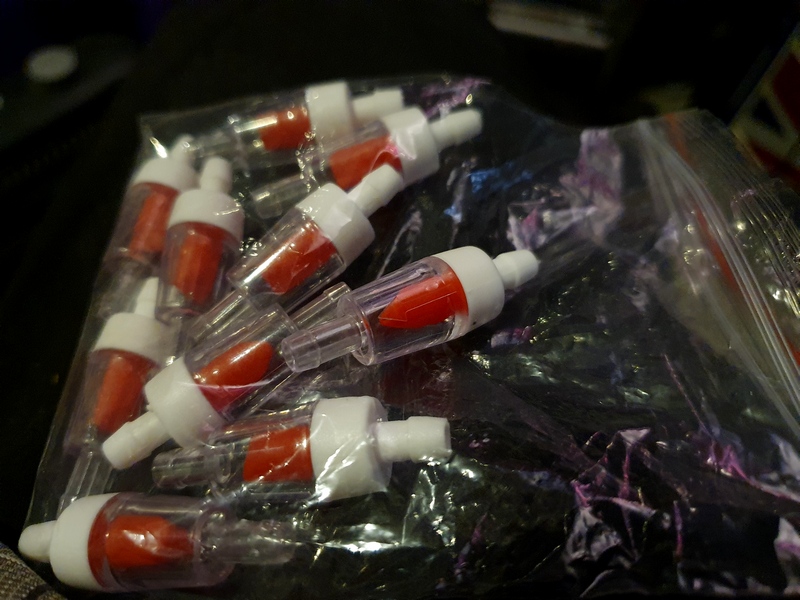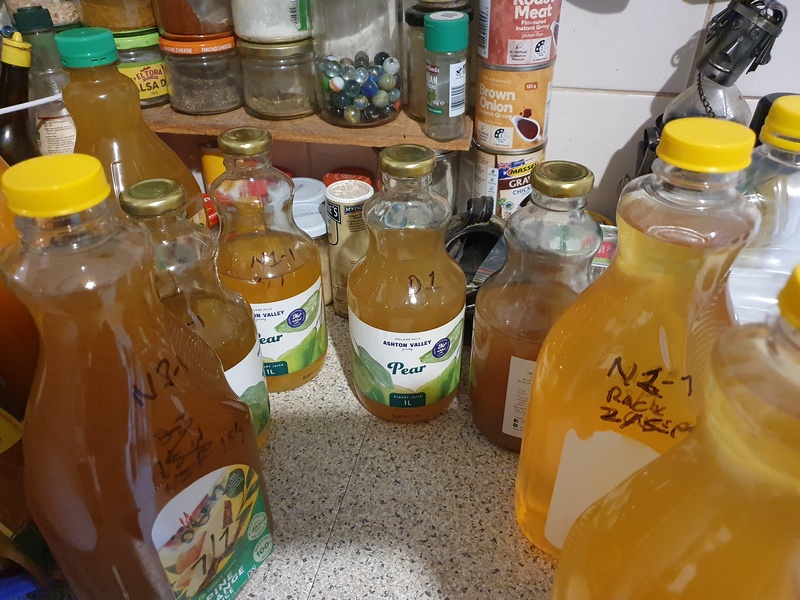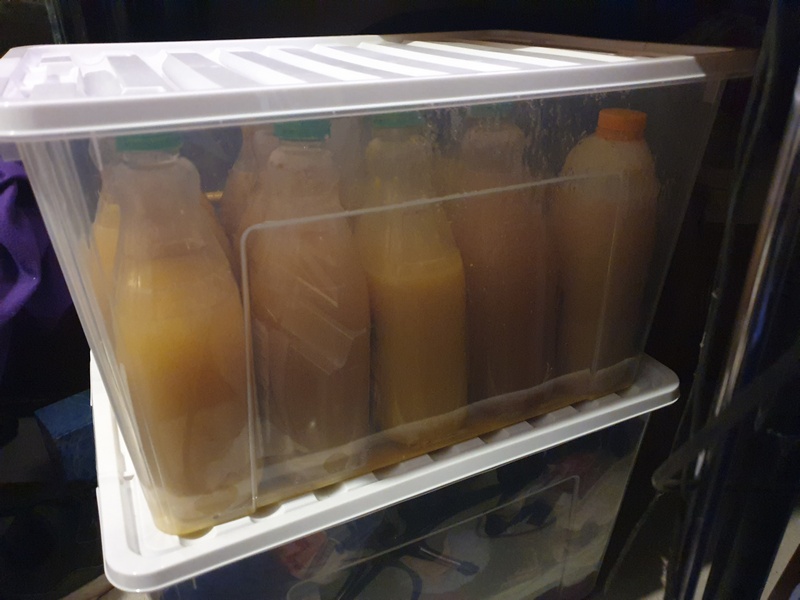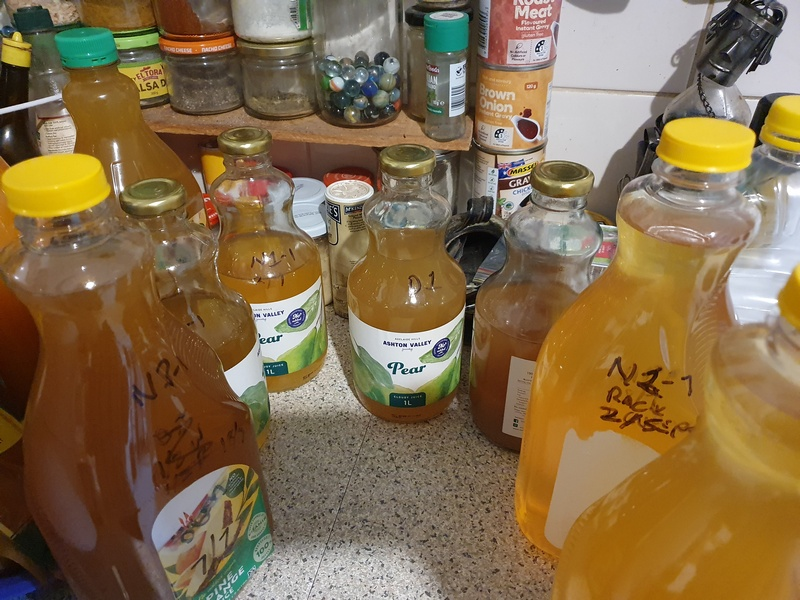DaveDiamond
Well-Known Member
I bought these one way valves from AliExpress at $1.51 aud for a pack of 10 just to check them out. They're far better than they used to be when Aquariums relied on air pumps. The beer forum is probably not the best place to post this, but it's the only sub forum dealing with equipment. I think they might be suited to people like me aging 'brews' in multiple small containers and bottles. Pop one in the lid and gas can escape but oxygen cant get in. Not as good as an airlock, but much easier for storing bottles and small containers. I think by putting two together somehow I could make a miniature airlock complete with sanitiser, or at least a dual chamber where the first would fill with CO2 and other gasses to provide more security, I'll keep you updated.

This photo is sort of random, it's just what was sitting out after an interrupted racking session, but some of these I want to leave to de-gas and age for a bit so I can compare one yeast to another and different recipe tweaks to another, and some I just want to de-gas and drink this week. A proper airlock makes them too tall to put in a storage tub or in most cupboards, so I think a bunch of lids with a little one way valve would make storage much easier. I thought others may have the same problem at some stage in their explorations and experimentations.
 Admin, please move this if there is a more suitable place for it.
Admin, please move this if there is a more suitable place for it.
Cheers!

This photo is sort of random, it's just what was sitting out after an interrupted racking session, but some of these I want to leave to de-gas and age for a bit so I can compare one yeast to another and different recipe tweaks to another, and some I just want to de-gas and drink this week. A proper airlock makes them too tall to put in a storage tub or in most cupboards, so I think a bunch of lids with a little one way valve would make storage much easier. I thought others may have the same problem at some stage in their explorations and experimentations.

Cheers!































![Craft A Brew - Safale S-04 Dry Yeast - Fermentis - English Ale Dry Yeast - For English and American Ales and Hard Apple Ciders - Ingredients for Home Brewing - Beer Making Supplies - [1 Pack]](https://m.media-amazon.com/images/I/41fVGNh6JfL._SL500_.jpg)



























